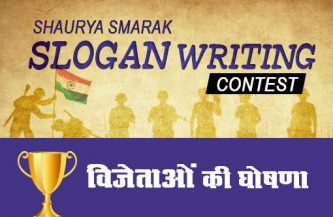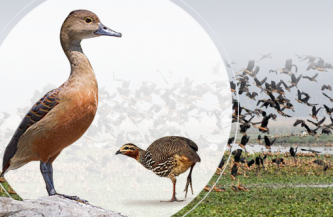73rd Republic Day of India

India celebrated its 73rd National Republic Day on the 26th of January, 2022. The constitution of India was adopted on the 26th of November, 1949 with Dr. B. R. Ambedkar as the Chairman of the Drafting Committee. This date is celebrated as the Constitution Day of India. Since, the constitution came into effect on the 26th January, 1950, to commemorate this event, India celebrates the Republic Day every year as a national holiday. India got its own constitution and became a free country breaking all the ties with the British reign.
On this day, a special program is held at the Rajpath, New Delhi, India. It is commenced at the Rajpath and ceases at the India Gate. The program is gracefully attended by the Honourable President, Vice President, Prime Minister, Ministers of all the states, dignitaries of the government, guests and dignitaries of foreign countries, selected children from schools, etc.
Some of the notable foreign dignitaries include –
- Russian President, Mr. Vladimir Putin in 2007
- American President, Mr. Barack Obama in 2015
- State Counsellor of Myanmar, Ms. Aung San Suu Kyi in 2018
Every state represents its glimpse via exhibition on the Rajpath. The event is graced by the cultural functions, parades from the armed forces – the Indian Air Force (IAF), the Indian Naval Forces (INF) and the Indian army.
On this day, the honorary civilian honours – the Padma awards are presented to the citizens for their contribution to India in various fields ranging from arts, education, social welfare, music, politics, science, technology, etc. The valour awards of India which are the Ashok Chakra, Paramvir Chakra and Vir Chakra are presented to the brave soldiers for their brave acts in the battlefields.
Every school, college and university in every district of the country celebrates this day and honours the legacy of India in their own way. The education campus hosts the teachers and children in the school where various cultural events take place. The flag is hoisted by the principal or the chief guest followed by the national song and national anthem. Sweets are distributed among the children. Various competitions and ceremonies are conducted in order to make the children aware about the sacrifices which our forefathers have made for a free India. The children should acknowledge the tremendous hard work which was put while drafting the constitution which is an intricate document formed by keeping into consideration all the citizens of the country.
The new India should pay their tributes to the makers of a free India by serving the country with all devotion and perseverance. They could do their bit by making the nation a better place for everyone to live in, by abstaining from corruption, violence, mal-practices, etc. They should live a sustainable lifestyle for the successors to have resources as well. Everyone should become a torchbearer for a positive transformation to occur in the nation – building by every little means they can. If this happens, India would behold an optimistic Domino effect and touch the zenith in the futures to unfold.
2. India achieved independence on 15 th August 1947, it took nearly 3 years to draft the constitution and 26 th January 1950 was chosen as the official enactment date as a nod to the “Purna Swaraj” declaration made during 1930. The country officially came to be known as Republic of India — a “sovereign socialist secular democratic republic” that “secures all its citizens justice, liberty, equality, and fraternity,” according to its preamble.
Republic day is celebrated in India with the Prime Minister of India laying a wreath at the “Amar Jawan Jyoti” which is now located at the inner ring, the Amar Chakra (Circle of Immortality), at “National War Memorial” which was inaugurated on 25 th February 2019 by the Prime Minister of India “Shree Narendra Damodardas Modi”, Chief of Defence Staff “General Bipin Rawat” and the three chief of staff of the Indian Armed Forces.The national war memorial constructed to honour and pay homage to the martyrs of the Indian armed forces who fought in conflicts of independent India. The national war memorial has four concentric circles and a central obelisk, the circles are designed as chakravyuh namely Amar Chakra (Circle of Immortality), Veerta Chakra (Circle of Bravery),Tyag Chakra (Circle of Sacrifice), Rakshak Chakra (Circle of Protection).
This year (2022) marks the 73rd Republic day and 75th independence day, the celebration started on 23 rd January with the birth anniversary of Netaji Subhash Chandra Bose. On 26th January a spectacular parade which included the biggest fly past of Indian air force air-crafts which flew over the Rajpath. This year’s parade was more focused on our diverse cultural traditions and less on military hardware. Since 2014 the republic day has reduced focus on showcasing our military arsenal and give more importance on featuring our regional diversity, our country’s accomplishments and development initiatives. Display of Nuclear weapons was also stopped since 2014 as India considers the use of such weapons curse for humanity and only possesses it as a deterrent.
The 73rd Republic Day was one of the grandest celebrations which included military parade with the contingents marching in uniforms worn through our independent past along with equipment used during that period. Then came the marching contingents of Indian Army, dressed in their ceremonial uniforms followed by the naval and air force contingents which were then succeeded by the Delhi police marching contingent, BSF camel contingent and NCC. The number of troops in marching contingents in the Republic day parade was reduced from 144 to 96.
The focus of this year’s parade was on tableau from states and union territories of New Delhi, Meghalaya, Haryana, Arunachal Pradesh, Uttarakhand, Uttar Pradesh, Gujarat, Goa, Karnataka, Chhattisgarh, Punjab, Maharashtra, Jammu and Kashmir. Tableau from Ministry of Culture showcases 150 years of Shri Aurobindo. The Central Public Works Department highlighted the 125th birth anniversary of Netaji Subhas Chandra Bose. Ministry of Civil Aviation’s tableau participated in the 73rd Republic Day Parade and showcased Regional Connectivity Scheme ‘UDAN’. Ministry of Education and Skill Development showcased key aspects of the new National Education Policy (NEP) through the theme “Vedas to Metaverse”. The tableau displayed achievement, developments initiatives and bio diversity of the nation.
The republic day celebration came to an end on 29th January with one of the best Beating Retreat ceremony ever witnessed. Auto-rickshaw drivers, Construction workers, Safai karamcharis and Frontline health workers were invited to watch the ceremony.
Indian tunes like ‘Veer Sainik’ ‘Hey Kanchha’, ‘Channa Bilauri’, ‘Jai Janam Bhumi’, ‘Nritya Sarita’, ‘Vijay Josh’, ‘Kesaria Banna’, ‘Veer Siachen’, ‘Hathroi’, ‘Vijay Ghosh’, ‘Ladaakoo’, ‘Swadeshi’, ‘Amar Chattan’, ‘Golden Arrows’, ‘Swarn Jayanti’ and “Aye Mere Watan Ke Logon” were included for the first time during the ceremony.
The highlight of the ceremony was the projection mapping show on the walls of north and south block to commemorate 75 years of independence and the drone show which consisted of 1000 made in India drones with all the hardware and software built in-house by Botlab Dynamics, the drones presented stunning visuals and enthralled the spectators as well as announce to the world that India has the technology and skilled work force that can produce such precision equipment and software.
3. “Swaraj is my birth right and I shall have it” – By Bal Gangadhar Tilak
India’s vision has augmented ever since our Hon’ble PM Narendra Modi has chaired. There seems a new and modern view of India, at the national and at the global level, too. The same has been witnessed in the way we commemorate or celebrate our Republic Day.
“Republic Day” is not just a day of pride, but to quote it in the language of millennials, it is an “Emotion”.
In 2022, India observed its 73rd Republic Day! While every year this day is celebrated with great zeal and zeitgeist just the way we see the glorious parades at the Janpath, at the capital of our country “New Delhi”. This day is marked in the history because of one more special reason. I am sure you must have guessed it by now…it is Flag hoisting! How proud we feel when we see out Indian Flag “Tiranga” flying high with the air at the top! This has become a common practice in all parts of India, from schools to companies, all hoist the flag with great pride and honour on this day.
We, Indians, just don’t celebrate this day but also reminisce our significant history. When we were attaining our freedom, or Independence to call it as, there came our constitution into existence, and we set ourselves free from the colonial rule thereby signifying the spirit of autonomy and individualism.
It is a day we mark ourselves high and the whole India, with great gratification and enjoyment, celebrates this day.
We witness various cultural events; folk events being celebrated in all the part of India and world wide too. We honour our martyrs who have sacrificed their lives for the country, we felicitate the soldiers with prestigious awards and rewards, medals. It’s followed by a 21-gun salute, national flag hoisting, and national anthem.
If we see the general atmosphere that day, the ambience, the vibes all over India is so soothing and the best part is that on this day, most of the country’s small children decide to serve the country by dreaming of becoming an army officer, military personnel, navy officer or joining the Indian Air Force. This day, every house is lighted up with happiness & patriotism. It has also been seen that, every house’s television has patriotic films being played, songs of the country being heard, and plays being seen.
How privilege it is for us, being Indians, to see this day and to celebrate it with everyone of us! Just to reiterate, this day has a special place in the hearts of us. We have gratitude and respect for our country, and this becomes a special reason why we find this day a significant one. We see tears In the eyes of many on this day, on this day we see smiles on many faces, we see prayers, we see pride, we see honour and thankfulness for the country.
I have myself enjoyed this day and have been enjoying this day with utmost pride. I am sure you too must have!
We are Indians! And we are proud of it! Jai Hind, Jai Bharat!
“Every Indian should now forget that he is a Rajput, a Sikh, or a Jat. He must remember that he is an Indian” – Sardar Vallabhbhai Patel
4. On 26 January 1950, the Constitution of India 1950 came into effect and India transformed from a British dominion into an independent constitutional republic – a day we annually celebrate as Republic Day. Much like the day we got our independence, the day had its fair share of celebration and pomp. Today, India is a major global economic and political power with a burgeoning middle class and a large number of well-educated, young professionals from varied walks of life. Like how we celebrate our Independence Day, the Republic Day is marked by pomp and show. The nation comes together on that day to commemorate its shared principles and history, to show that India has an identity distinct from any other country. And, in this Republic Day, we wish to reflect on what we can learn from our very own Independence Day.
Let us first remember and acknowledge the sacrifices made by our freedom fighters in achieving our freedom from the shackles of the British Empire. It is because of them that India has emerged as a vibrant democracy. Despite the colonials’ extensive use of mis-information, spies and propaganda campaigns, the founding fathers of our nation, the late Mahatma Gandhi, Jawaharlal Nehru, Sardar Vallabhbhai Patel and Maulana Abul Kalam Azad, were able to fight against the British.
It is also important to mention that our Independence Day is a national holiday because it embodies the theme of “ Unity in Diversity” – a principle that the country has fully embraced. Each state and language has its own cultural features and traditions, but have all joined together in celebrating the nation’s biggest festival, Republic Day.
In the past, the parade was only about the Indian Army and other military contingents but today, it has morphed into a spectacle that brings together, not only the armed forces but also women from all walks of life, representatives from all the political parties and the like. I believe this is a manifestation of how diverse and pluralistic India is, and the ultimate proof that the republic has prevailed over the autocracy of the British.
We can also learn a lot from the 21st century that India has ushered in. A new India has emerged as a leader in the global marketplace, with a dynamic economy and a vast and growing middle class. With the introduction of a new-generation of technology and several groundbreaking initiatives, India has been able to advance its economic growth in all sectors of the economy. The country is now firmly on the path to becoming the next economic super power. We are also one of the fastest growing major economies in the world, and are expected to have the world’s third largest economy by 2030.
Similarly, the recent Indian government has recognised the crucial role that women have played in this development and has enacted progressive laws and policies that are aimed at ensuring gender equality. Many of us here today, are also seen as role models for girls and young women around the country. Our collective success is an inspiration for the rest of the country. It is our India that will inspire the world to dream and work towards fulfilling their aspirations. We should also celebrate our diversity and the harmony and peace that our country continues to enjoy.
Not only the land of the four rivers, but India is also a land where people from all corners of the globe find a home. Indians are constantly traveling across borders to pursue education, make a living, pursue their passion. They have enriched the nation’s cultural fabric with their rich cultural heritage and have contributed to the arts, music, literature and every form of creativity.
The whole world knows the importance of travel, of exploring the different cultures and customs of different countries. yet there is still much that we need to do to realise our vision of a stronger, more united, more inclusive and a more prosperous India. We have a significant youth bulge. Approximately 68% of our population is below the age of 35. Republic day celebrations must acknowledge this youth bulge and energise it to act as a source of vitality to realise the vision of a better future. We are building up our science and technology base. We have the demographic dividend to rely upon. We have started giving universal access to electricity to rural households. We are investing in clean and renewable energy. We must focus on areas where we can make meaningful progress in the shortest possible time – one of them is healthcare.
Global applause for India’s new status as a constitutional republic was also accompanied by skepticism. Many were apprehensive about India’s survival: India was too diverse and poor to sustain constitutional democracy. As history would have it, India, and its Constitution, did survive – even while its neighbours and political contemporaries like Pakistan and Sri Lanka struggled to remain democratic and preserve their Constitutions. Republic Day then is not just a moment for us to celebrate India’s status as a constitutional republic, but to remind ourselves to not take it for granted.
[These are 4 different blogs collated as a single blog written by our MyGov Saathis, Antara Ojha, Omkar Desai, Shreyas and Team PopXo respectively.]

















